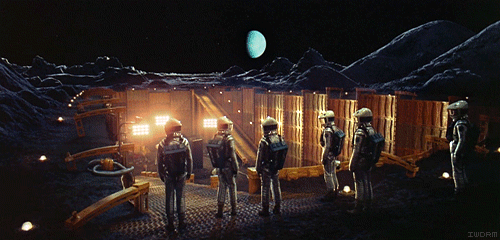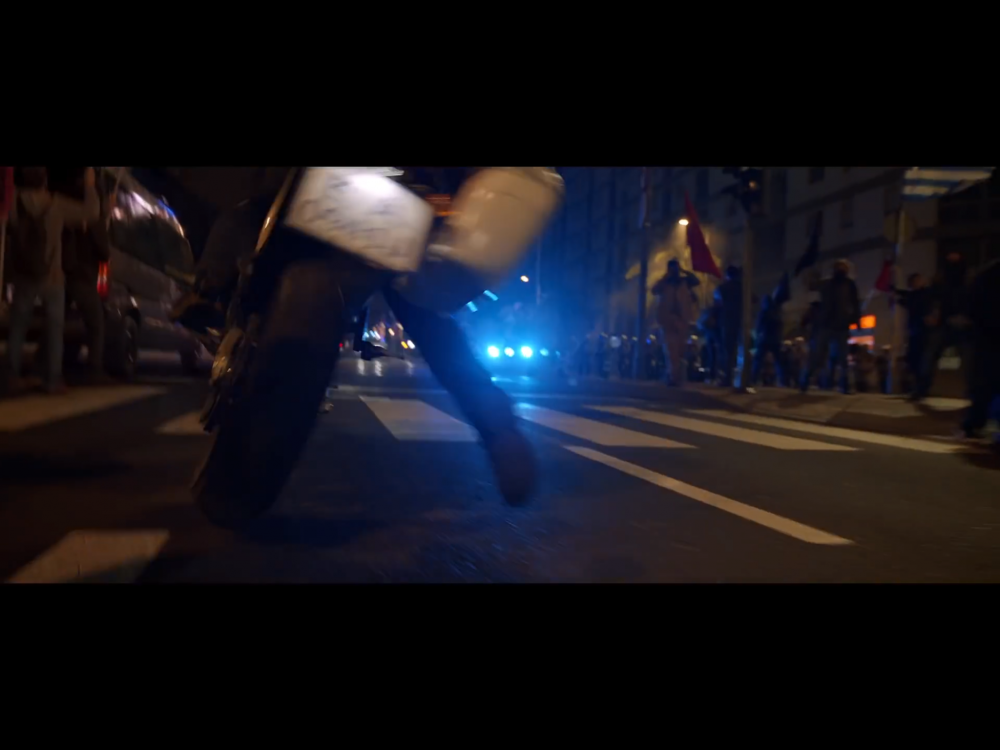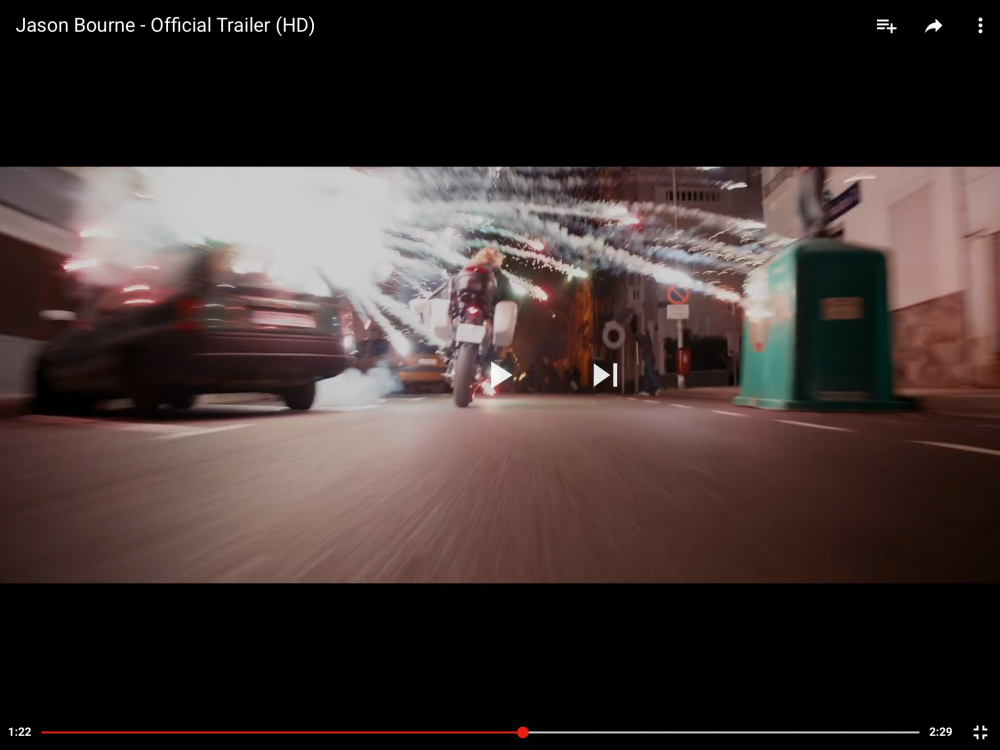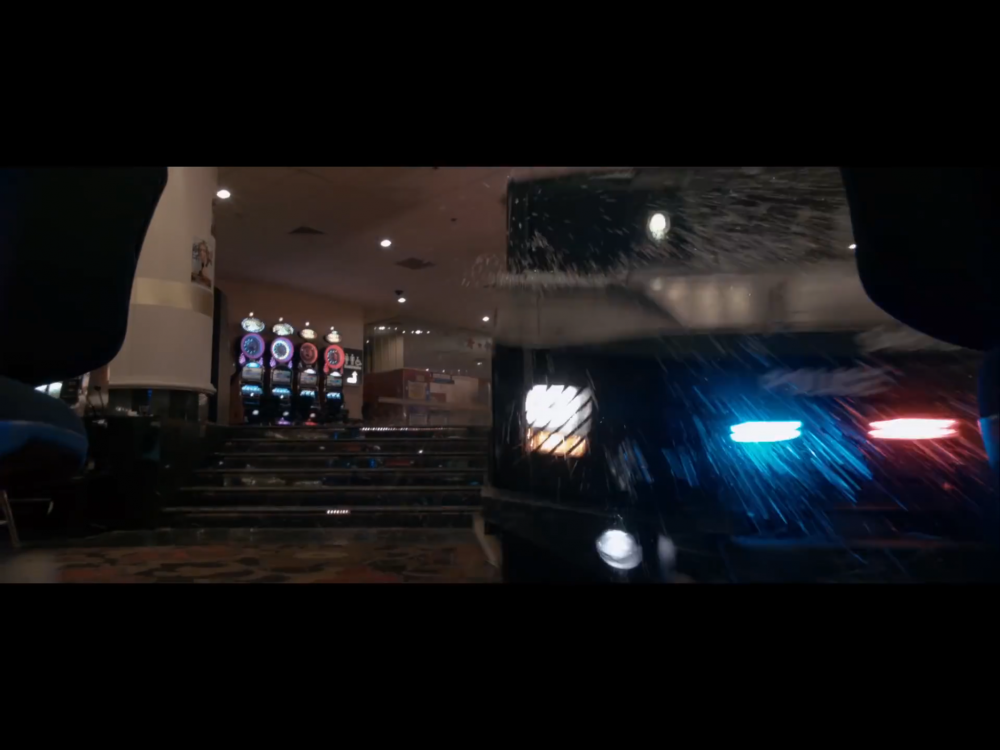-
Posts
632 -
Joined
-
Last visited
Content Type
Profiles
Forums
Articles
Everything posted by Hans Punk
-
Yes, reworked internals and more durable matte paint finish on exterior.
-
Yes I have one. It's optically great, mechanically poor IMO. But It's probably the best solution out there at the moment for use with the Kowa Inflight 35, You will probably need some modification to make it work at its best. DM me if you need specific pointers (it can be a lengthy process). Here it is on my Inflight PA-35, with configured rail mount and custom clamps.
-
I've owned 3 Kowa Inflight PA-35's in the past 5 years...all bought from eBay, make that what you will regarding rarity. The all-black one featured in that Ebay link I've not seen before, looks like the less pretty non-Prominar model. I guess it's high price could be worth the money to someone who appreciates it. As for the quality of the optics, it has documented here before on this forum by me and others...it is pretty much as good as it gets (especially for full frame), regarding Kowa scope projection optics. If wanting to use it with a variable diopter such as Rangefinder, Core DNA, Rectilux etc...you will need to find a customised solution to cover the large front diameter of the Kowa, and allows the diopter rear to get close enough to the inflight's front optic to get the most coverage from this lens. (All current vari-diopters on the market are not really intended for use on lenses with front diameters this large).
-
The act of attacking file sharing sites has already been done, publicly as well as behind closed doors by government 'approved' black hats. Piracy prevention and data control is all around us, simple example is YouTube content viewable in the US may not be viewable in other countries, sometimes for political reasons, sometimes for 'copyright' reasons. Google own YT, so it is often the partner with governments to keep a large portion of media being controlled and accessed worldwide. The fact that piracy remains at all is a side effect from the early days when the world biggest entertainment groups were warned multiple times that this 'Napster' thing could pose a serious threat to the music industry and beyond, that the stolen profits from illegal online redistribution would seriously effect them...they all laughed, whilst wearing their short-sighted glasses in the boardroom. I have limited sympathy for the entertainment bigwig companies who now loose a certain percentage to piracy because they did not heed the warnings fast enough. But the reality is that it can hit the indie filmmaker or musician in the nuts...which is not good. I used to remember a time when music videos used to have budgets! Having a government body that effectively destroys or censors 'illegal' sites that distribute copyrighted works or other media sounds like perfect common sense. But unfortunatly it's not that simple. More often than not, pirated material is hosted on servers located oversees that are hard or impossible to police and warrant any duristriction over. These servers and scattered networks are often the same gateways that repressed citizens from dictatorships can access 'the truth' from - bypassing state run media outlet reports on world events, and get a more unbiased view on the world...through television, film and even music. Any government that overtly has the power and will to control what you see or what information you are allowed to read is a very bad idea. It happens more to us westerners than we think, we are just used to our particular flavour of brainwash. But don't worry, If Trump gets to play president, he'll eradicate online piracy in 5 mins, right after defeating ISIS by deleating all their Twitter accounts with the press of Bill Gates' finger on the magic internet 'Delete' button. (Yes, Trump thinks that is possible) A flip side to piracy is that it is used (or allowed) to be used to undermine dictatorial governments with 'subversive western values'. North Koreans risk imprisiment or death by smuggling in and viewing western films/ TV shows and music, often hidden on USB sticks and distributed amongst the bravest members of the population. There is nothing more destabilising to a hardline dictatorship than allowing its repressed population to see what a shitty deal they have...and to give an alternative perspective on how they should be governed and ruled. As soon as N Korea get to be an feasible outside threat, the people's blind loyalty and enslavement to dictatorship would likely be eroded enough with western Ideology, willing to either overthrow the government themselves, or at least be less resistant to an invading force to overthrow it 'for them'. It's been a proven propaganda weapon in the past, give a tribe or indigenous people a television, and in 5-10 years they will all be truck driving 20 a day smokers, drinking beer worrying about how to pay off their credit cards...meanwhile steal their land and put up your flag. In a nutshell, the big billion dollar entertainment companies were told to implement safeguards and file for better online control of their material at the dawn of the Internet revolution. They did not listen (to lots of people), and now independent content creators are paying the price for having to live in a world where a torrented copy of your work can be a massive hit in profit, not a 0.2 percentage of millions of sales. EDIT: Interesting... http://variety.com/2016/film/news/bittorrent-cash-grants-discovery-fund-filmmakers-musicians-1201833625/
-

Advice on eBay anamorphic lens listing (No advertising)
Hans Punk replied to Andrew Reid's topic in Cameras
These lenses were re-worked Kowa B&H bodies, with ability to manually spin orientation for surreal effects. Sometimes motorised by attaching gear wheel to orientation ring. Results seen in video below. As for how much it's worth? - there was a load of these for sale a couple of years ago, usually went cheaper than regular Kowa B&H prices since the added bodywork adds a bit of weight, and the front section is built up to 115mm making it a bit more complicated to source affordable filter/close up diopter solutions that would fit. So it's slightly less appealing for general DSLR type filmmaking - but it could be made to work. -
-
Think my eyes a bit too sensitive to it...since I work a bit in post production, and have had to deal with matching/fixing shots similar to this in the past. I'm sure these shots work when viewed in the context of the film, even when I notice these things at a screening I often don't care. But I'd love DP's to not defaulting to 'disposable' digital cameras (as they sometimes regard them) without first considering older compact film cameras (that are now dirt cheap) - that will often deliver better options in post for matching to the main unit cameras. The shots from these crazy stunt/crash/pyro shots are often the ones put front and centre in a movie trailer, so I think it's worth the extra effort to consider quality over convenience IMHO.
-
Quite noticeable desaturation/colour tone shift compared with neighbouring shots...micro shake of smaller camera body in motion...apparent big lift in contrast compared with other footage....has a 'smeary 360 degree shutter look'. These are almost certainly the pocket/micro shots, there are probably a few more that I'm not spotting but those are the ones that stick out as a 'sore thumb' to my eyes. like I said earlier, if it makes up part of an engaging sequence that by which point the audience is along for the ride (often literally) - then nobody should give a f**k if they intercut technically mis-matched footage. If it works in context, it works. But my observation is that when a DP says that they are dealing with great footage in post, and imply that these cameras cut in seamlessly with A&B cameras are either a bit blind/ misquoted/ or has concesiously decided that any mismatch will not take the audience out of the experience when cut together (which I agree it should not matter...as long as the shot is cool enough). It is possible to grade these tiny cameras to intercut seamlessly, but unfortunalty this DP (and many others on other recent films) seemingly decide to use them as glorified GoPro's - often revealing the slight shortcomings of image quality when exposed to very dynamic lighting and motion. The shots in the trailer I noticed looked like a saturation and slight contrast punch would have been of benefit to match the neighbouring shots. Feels like they left those shots pretty flat - to retain as much shadow detail as possible, yet forgetting that in the flow of a sequence, any contrast or saturation jump can sometimes look way worse than crushing any blacks. Ironically, a 70year old Eymo wind-up 35mm camera (which I keep banging on about) - would have probably performed way better in terms of being able to match any surrounding shots, as the nature of film can still handle highlight roll off and dynamic exposure manipulation with a lot more grace than most of the highest end digital cinema cameras.
-
As I mentioned 'Not saying that this is the case here' - meaning that I'm not countering claims in this thread, or particularly in the linked article but rather when circulated and discussed elsewhere - where the headlines often orientate around how crucial a particular 'affordable' camera model Is overstated in its use on a well known production, often with sponsor links to purchase said camera in a B&H link. It's all marketing that some people buy in to and before you know it, a regurgitated twisting of the facts pop up on forums as 'fact'. Act of Valor is a good case in point...the indie filmmaker buzz around the 5Dmkii use in that film was completely disproportionate to the use of celluloid. In a nutshell, an article highlighting a product used on a film's production (during its marketing period) should be taken with a pinch of salt. It is most likely going to be a glowing review, when accompanied with promotional stills from said film. The BM cameras are obviously a great fit for modern production use, especially since shooting compressed raw gives a very comparative quality to even the highest end cinema cameras. They can deliver fantastic images in the right hands. Saying that, at least one of the BM shots in the Bourne trailer sticks out like a sore thumb to my eyes. Spotting differences in image (even when intercut quickly) is subjective however, if the story is engaging enough no viewer (no matter how camera savvy) should notice any difference...or even care if they do. If it works in concert with surrounding imagery/context...great! I love to read and hear about big budget productions using affordable or 'prosumer' gear in achieving creative results, I'm all for it...especially if it enables more dynamic stunts and effects to be captured 'in-camera' safely. But you almost only ever hear the positive quotes and accounts from DP's- which makes my cynical side presume marketing is at play. They should really be directly asking the poor guy or girl who has to match these cameras in the Di or the AC who lost a take due to corrupt media from a camera that was subjected to too much vibration. But as stated earlier, it's getting a whole lot easier thanks to affordable compact cameras that can shoot raw like the BM models. To this point, the linked article is valid and fairly interesting, just wish more people read past the headlines a bit more and question why we even need to be told this anymore....most of us know that many modern 'prosumer' or 'affordable' cameras are being used in this way. Just as WW2 era wind-up 35mm Eymo's used to be the 'affordable' camera that could be used in dynamic ways, exactly as these modern digital cameras are being deployed.
-
Looks like isco ultrastar or similar...nice and sharp, but maybe a bit lifeless for some tastes (high contrast). If I had to wild guess - it would flare a muted green streak? (i can see a hint of coating fringe on a couple of shots)
-
I love how occasional 0.5 - 2sec shots from crash/pov cams make the rounds on some forums as 'This camera shot the whole movie!' Not saying that this is the case here, it just tickles me that marketing spin can be very misleading in explaining proportion of 'prosumer' camera footage used these days in big budget features. The amount of people who think Act of Valor was shot entirely on 5DMKII is impressive..overlooking that the bulk of the 'pretty' photography was shot on Arri 235/435 Panavision platinum. Most of the time cheaper cameras make up parts of a quick cut sequence that could include a crayon drawing and nobody would notice any mismatch in quality. Exactly how nobody noticed windup WW2 era Eymos or crusty 16mm cameras when put in crash boxes and intercut into an action sequence in the good old film days. I miss windup eymo's being used for car stunts....they sure could take a beating. This is why putting multiple inexpensive cameras close to the action is a must..and why you should keep everyone at a safe distance:
-
I'm fortunate that it only needs to shift around an Alexa mini or DSLR...so those steppers are fine. The maximum recommended payload is 5-6kg, which is more than I'll ever need. Most people seem to use dynamic perception gear for time lapse use, but the possibilities for video use are very competent, providing the camera payload is relatively modest. Yep, the Graffik software and the ability to patch into dragonframe for stop motion work is a massive plus.
-
I recently ordered a full spec Dynamic Perception 3 axis rig...did a lot of research into Kessler/ Edelkrone and found the Dynamic Perception setup to be way more friendly for customising (open source) and a much better fit for my needs. I've built my own focus motor, which i can easily patch into the system (yet will have to loose 1 axis when using it - as current NMX controller only supports 3 channel). Apparently in the near future, they will allow multiple NMX boxes to be daisy chained, allowing theoretically unlimited motor channels to be controlled via app software, or when tethered to tablet/pc running the more featured Graffik software.
-

Sell everything! Your lenses are now all worthless!!
Hans Punk replied to Damphousse's topic in Cameras
Well, after the US military buyout the technology (along with Vantablack) I guess we might see a trickle down to consumer based goods in around 30-40 years if we are lucky. For example, there are batteries that already exist in (and out of) labs that can power your portable electronics for months from a single 60 second charge, do we see them in our consumer electronics? Nope. -

Advice on eBay anamorphic lens listing (No advertising)
Hans Punk replied to Andrew Reid's topic in Cameras
Internal Prism design -
http://www.eoshd.com/anamorphic-guide/
-
Focus marks denotes it can focus. Looks similar to a Superama 1.5x for 8mm (but it isn't). If the flares appear as multiple light blue streaks then it is probably of the same optical recipe as cinevision/yashica-scope type lenses. Should resolve good sharpness on the GH4, especially when taking lens stopped down to around f4...Nice lens. Focus through = fixed focus. (Normally at several feet-infinity, can rack focus to limited amount if taking lens heavily stopped down) Single focus = Taking lens set to infinity, full range achieved from anamorphic focusing only. The lens pictured in the OP is neither, can be regarded as dual-focus when adapted for modern camera use. Requires focus of taking lens and scope lens to be unified to resolve sharp focus. Third party variable diopter (rangefinder/rectiliux etc) would enable lens to operate as single focus. Thread size most likely not a common pitch thread used nowadays for photographic use i.e 20.2mm (but there is always the occasional thread that is not weird on lenses like this). You can often make your own mounting solution from adapting step rings and electrical tape, but be very careful not to let the rear optic touch the front optic of the taking lens - it will damage the coating and probably the glass surface of both lenses. Helios 44 is a good taking lens choice - allows small 8mm lenses like these to go slightly 'inside' the front of the Helios, minimising light loss and vignette. To get an accurate thread measurement, best to get some digital calipers and measure the diameter of the thread yourself. Most likely you'd be better off measuring the widest rear (static) diameter of the lens and get a proper clamp adapter from RedStan or Rapido. worth spending bucks on a decent clamp if the optics are clean IMHO - as it should deliver very nice results on the smaller sensor of the GH4 with taking lens stopped down a little (to get optimum sharpness, yet will retain that lovely multi-streak flare).
-
Can confirm LED strobes that have 'decay/pulse/fade' option work well. Did a shoot recently where gunfire flashes needed to be simulated as interactive lighting. No rolling shutter /half frame issues. Don't recall the brand but they were consumer grade DJ fixtures. DMX controlled - or 0-10v trigger input (which is what I rigged up to a simple nail board to manually strike multiple flash runs on cue). Should be a cheap rent or affordable purchase. Ideally do a camera test first with one or more units before ordering 50
-
Yes - the SmallHD port protector is pretty sweet and not too expensive. I've got mine attached to the camera at all times (when in or out of a wooden camera cage) - and it is one of the most unobtrusive designs I've seen...and can be removed in seconds by one thumbscrew. The only issue I've encountered is that the protector slightly covers one side of the camera's base - so some larger tripod plates and some camera cages won't be able to fit flush to the camera. This is very easily solved by cutting some thin rubber mat material to compensate the other side to ensure a snug/ level fit. Remember, if you testing the port on a TV, you will need a mini HDMI - HDMI (full size) cable. If you can not test out when you visit the seller, maybe just ask them if it works ok- most people are honest when meeting face to face @squig as covered everything else to look out for...some good advice there.
-
Canon firmware not an issue for installing ML - if it comes with the newest canon build, it can be rolled back via EOS utility to a compatible firmware build - to then allow ML installation. Head over to the Magic lantern forum for any installation or operational details (it can take some digging around, but all the answers are there to be found). YouTube is also quite good to find tutorials on camera setup and file workflow. +1 on checking mini HDMI socket - if you have a monitor, take it with you to check the port is operational...them ports can be expensive to get repaired. If you plan to shoot with an external monitor on the 5D3, it's highly recommend to use a HDMI lock or gripper to help protect the socket. I have a very nice one from SmallHD that fits the camera body like a glove and is nice and rugged. http://www.bhphotovideo.com/c/product/1078745-REG/smallhd_acc_cam_pp_5dmk3_port_protector_for_canon.html
-
Always a good idea to record a clip, then play back from camera to check (often flicker does not reveal itself until conformed to normal speed playback). Different light fixtures can also have varying frequencies sometimes (Neon,LED etc) - so the quickest method I find is to record a little test clip, rather than rely 100% on the mathematically 'correct' solution. The longer test clip you can do - the better, as that can also reveal phasing issues (slower speed banding). In this case, the flicker calculator mentioned above would be a sensible start - then confirm that with a clip test.
-
Kicking cameras around on the floor can get them dirty...make sure you wash them afterwards.
-
I take your point, but what makes the Digital Bolex and the Ikonoskop create such lovely images were those Kodak originated sensors. Once Kodak turned out their pockets and sold their mothers to whoever would take them, it was never going to be in a large company's conception to cut and paste legitimately purchased IP from a competitor (current or past) - to then resell into a new product. Shareholders would raise an eyebrow or two when they read in the acquisition reports that a current Fuji product contained at its core, purchased and repurposed Kodak IP from 10 years ago. This is my wild guess why Ikonoskop and Digital Bolex were allowed/ could have the run it had - it could be feasible that the access to licence could have been on an agreed limited term from whoever owns the rights now. In a nutshell it appears to not be a sustainable economic viability to continue these cameras - at that price point...to effectively a very niche market....even when specifically made for that niche market in the case of the Digital Bolex. I agree that what Kodak should do is use that sweet Nolan/ Tarantino magnet money to kick that ridiculous super 8 hybrid camera to the curb, and put a sweet CCD they hid in one of their dusty draws into a S16 digital cine camera of their own. Make it accessible to the Indie/film school crowd and keep Kodak as a brand that younglings will grow up associating with film making...albeit digital. I'm not belittling Digital Bolex in so much sensor talk, what they did took balls and big credit to them for sticking to their plan for the D16 and keeping it niche.
-
Fuji would be the last company to buy Digital Bolex because the sensor inside is a Kodak CCD - likewise as with the Ikonoskop. From back when Kodak were frantically selling off patents and IP to keep them afloat before they mismanaged themselves into oblivion. When I worked for them, I actually witnessed a Kodak manager tell me that digital would never replace consumer and professional film cameras...this was while the demolition crew were surveying the factory floor of the film processing facility.





